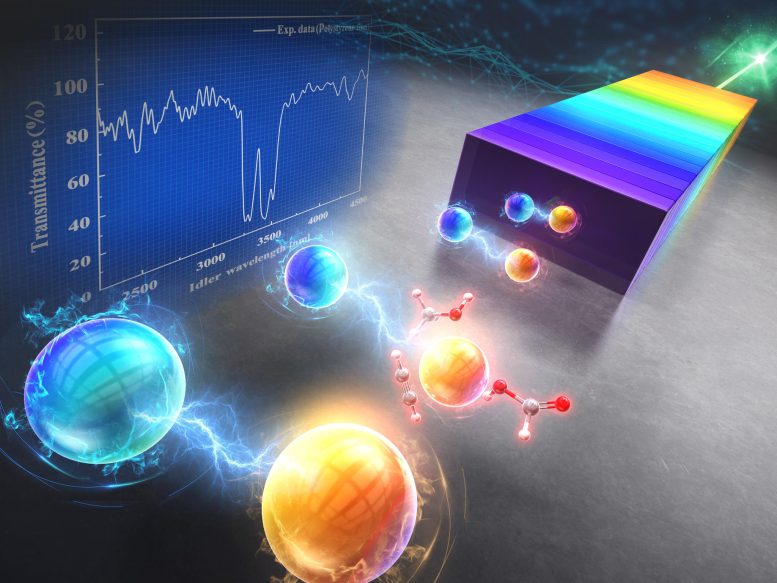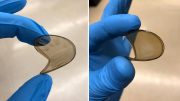
A research team from Kyoto University has significantly advanced infrared spectroscopy technology by integrating a quantum light source, overcoming previous limitations of FTIRs regarding sensitivity and size. This breakthrough enables the creation of compact, efficient scanners that can accurately identify a wide array of materials, setting a new standard for portable, high-performance devices in various fields, including environmental monitoring, medicine, and security. Credit: KyotoU/Shigeki Takeuchi
Kyoto University has developed quantum infrared spectroscopy with a wider bandwidth.
Our comprehension of the world significantly depends on our grasp of its constituent materials and how they interact. Recent progress in materials science has dramatically improved our capability to detect chemical substances and broadened the range of potential uses.
One such technology is infrared spectroscopy, used for molecular identification in various fields, such as in medicine, environmental monitoring, and industrial production. However, even the best existing tool — the Fourier transform infrared spectrometer or FTIR — utilizes a heating element as its light source. Resulting detector noise in the infrared region limits the devices’ sensitivity, while physical properties hinder miniaturization.
Quantum Innovation in Spectroscopy
Now, a research team led by Kyoto University has addressed this problem by incorporating a quantum light source. Their innovative ultra-broadband, quantum-entangled source generates a relatively wider range of infrared photons with wavelengths between 2 μm and 5 μm.
“This achievement sets the stage for dramatically downsizing the system and upgrading infrared spectrometer sensitivity,” says Shigeki Takeuchi of the Department of Electronic Science and Engineering.
Another elephant in the room with FTIRs is the burden of transporting mammoth-sized, power-hungry equipment to various locations for testing materials on-site. Takeuchi eyes a future where his team’s compact, high-performance, battery-operated scanners will lead to easy-to-use applications in various fields such as environmental monitoring, medicine, and security.
“We can obtain spectra for various target samples, including hard solids, plastics, and organic solutions. Shimadzu Corporation — our partner that developed the quantum light device — has concurred that the broadband measurement spectra were very convincing for distinguishing substances for a wide range of samples,” adds Takeuchi.
Quantum Mechanics and Broadband Applications
Although quantum entangled light is not new, bandwidth has thus far been limited to a narrow range of 1 μm or less in the infrared region. This new technique, meanwhile, uses the unique properties of quantum mechanics — such as superposition and entanglement — to overcome the limitations of conventional techniques.
The team’s independently developed chirped quasi-phase-matching device generates quantum-entangled light by harnessing chirping — gradually changing an element’s polarization reversal period — to generate quantum photon pairs over a wide bandwidth.
“Improving the sensitivity of quantum infrared spectroscopy and developing quantum imaging in the infrared region are part of our quest to develop real-world quantum technologies,” remarks Takeuchi.
The study was funded by the Ministry of Education, Culture, Sports, Science and Technology MEXT Q-LEAP, Core Research for Evolutional Science and Technology, the Cabinet Office, the Government of Japan, the Public/Private R and D Investment Strategic Expansion Program, the Precursory Research for Embryonic Science and Technology, and the Japan Society for the Promotion of Science.
Reference: “Ultra-broadband quantum infrared spectroscopy” by Mamoru Hisamitsu, Norihide Oda, Toshiyuki Tashima, Yu Mukai, Masaya Arahata, Katsuhiko Tokuda, Ryo Okamoto and Shigeki Takeuchi, 19 January 2024, Optica.
DOI: doi:10.1364/OPTICA.504450








The chirped quasi phase matching device by harnessing chirping in producing photon pairs quantam light is an exciting breakthrough idea.love to know more about it.